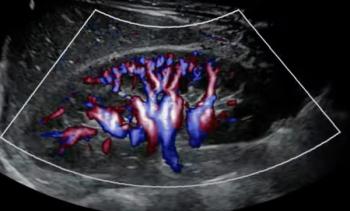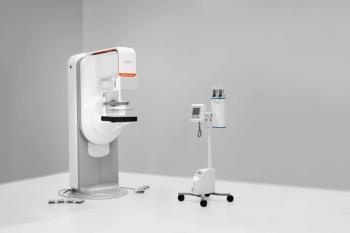
Wide CT detectors raise stakes on patient dose debate
The new generation of wide CT detectors provides expanded coverage, allowing faster scans and even dynamic imaging of organs, including the heart and brain. Where the onetime state-of-the-art 4-cm coverage takes four steps to cover the heart, detectors spanning 8 cm require just two. Toshiba’s 16-cm-wide, 320-channel detector captures the heart in one. But there are disadvantages.
The new generation of wide CT detectors provides expanded coverage, allowing faster scans and even dynamic imaging of organs, including the heart and brain. Where the onetime state-of-the-art 4-cm coverage takes four steps to cover the heart, detectors spanning 8 cm require just two. Toshiba's 16-cm-wide, 320-channel detector captures the heart in one. But there are disadvantages.
Wider coverage per rotation threatens to increase patient radiation exposure. One source of this problem is that scans begin before and continue after the region of interest, potentially exposing patients to more radiation than needed. Vendors have already solved this problem, called over-ranging, by using collimators that block unnecessary x-rays.
Not yet resolved, however, are limitations in geometric efficiency, said Dr. Mathias Prokop, speaking May 19 at Stanford's 11th International Symposium on Multidetector-Row CT. The conebeam reconstruction that accompanies wide detectors requires a relatively small field-of-view in the z-axis and, consequently, imposes low-dose efficiency.
The most promising means to improve efficiency and further reduce dose will be the use of postprocessing algorithms that get more from the x-rays used. The question is how best to apply them.
Fixes for patient radiation and dose efficiency raise concerns not seen before. Image quality has always been the unquestioned priority in scanner development. Now, with the ability of software applications such as iterative reconstruction, practitioners have the choice of boosting image quality to new heights or keeping image quality at the same level and reducing patient radiation exposure. This brings into question how much image quality is enough. It will not be easy to answer, as different exams and patients present different challenges and opportunities for dose reduction.
Discussions among user groups and the involvement of luminaries in leading those discussions could be an important step toward balancing dose and image quality. Peer-reviewed research, however, may provide the best means for coming up with viable answers, as this work might be used to set clinical benchmarks for balancing image quality and dose.
Regardless of how it is done, imaging vendors and practitioners will have to work together to objectively determine the levels of image quality needed to diagnose different disease states, if the issue of patient radiation dose is to be adequately addressed.
Newsletter
Stay at the forefront of radiology with the Diagnostic Imaging newsletter, delivering the latest news, clinical insights, and imaging advancements for today’s radiologists.




























